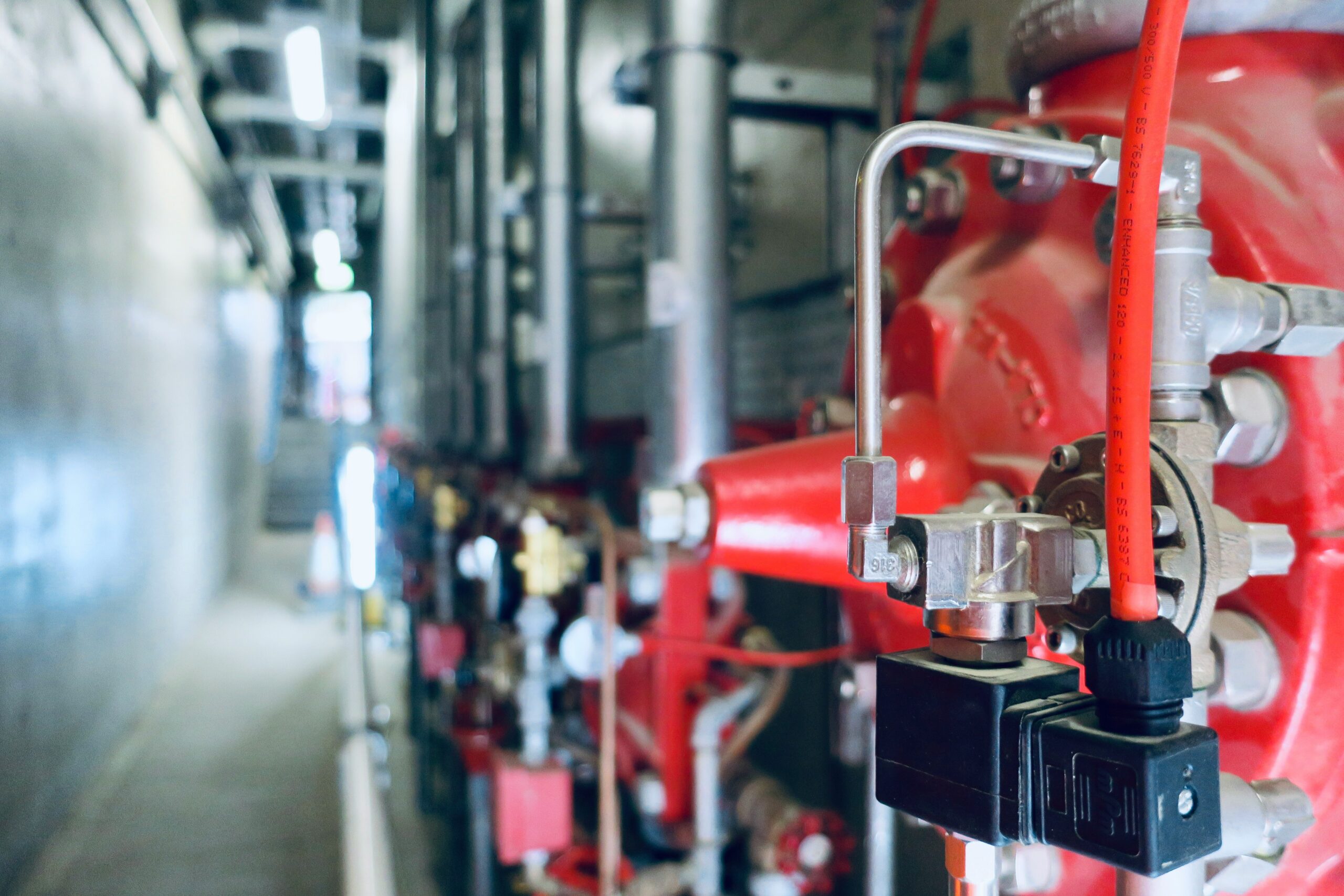

Safety Standards and Regulations in the Pakistani Automotive Industry
Safety Standards and Regulations in the Pakistani Automotive Industry
The automotive industry in Pakistan has experienced significant growth in recent years. With this growth comes a greater need for safety standards and regulations to ensure the well-being of both drivers and passengers. In this blog post, we will explore the current safety standards and regulations in the Pakistani automotive industry and their impact on road safety.
One of the key safety standards in the Pakistani automotive industry is the requirement for all vehicles to meet certain crash test standards. These standards are set by the Pakistan Automotive Manufacturers Association (PAMA) and are aimed at ensuring that vehicles can withstand a certain level of impact in the event of a collision. This includes testing the structural integrity of the vehicle, as well as the effectiveness of safety features such as airbags and seat belts.
In addition to crash test standards, there are also regulations in place regarding the use of safety equipment in vehicles. For example, all vehicles in Pakistan are required to have functioning seat belts for both the driver and passengers. This is to ensure that in the event of a collision, occupants are properly restrained and are less likely to be seriously injured. Furthermore, it is mandatory for all vehicles to have airbags installed, which provide an additional layer of protection in the event of a crash.
Another important aspect of safety standards in the Pakistani automotive industry is the regulation of vehicle maintenance and inspection. All vehicles in Pakistan are required to undergo regular inspections to ensure that they are in proper working condition. This includes checking the brakes, tires, lights, and other essential components of the vehicle. By enforcing these inspections, the government aims to reduce the number of accidents caused by faulty equipment or poor maintenance.
Furthermore, the Pakistani government has also implemented regulations regarding the use of child safety seats in vehicles. It is mandatory for all vehicles to have appropriate child restraints installed for children under a certain age or weight. This is to ensure that young passengers are properly secured and protected while traveling on the roads.
Overall, the safety standards and regulations in the Pakistani automotive industry play a crucial role in ensuring road safety. By setting standards for crash tests, safety equipment, vehicle maintenance, and child restraints, the government aims to reduce the number of accidents and minimize the severity of injuries. However, it is important for both manufacturers and consumers to adhere to these standards and prioritize safety when it comes to vehicles and transportation.
The Importance of Safety Standards
Safety standards are crucial in any industry, but they are especially important in the automotive industry where lives are at stake. By implementing and adhering to safety standards, manufacturers can ensure that their vehicles meet certain criteria for safety and performance. This not only protects the consumers but also helps to build trust in the industry as a whole.
One of the primary reasons why safety standards are so important in the automotive industry is to prevent accidents and save lives. Vehicles that do not meet safety standards can pose significant risks to both the driver and passengers. For example, if a car does not have properly functioning brakes, it may not be able to stop in time to avoid a collision. Similarly, if a vehicle does not have adequate airbags, occupants may be at a higher risk of injury in the event of a crash.
Moreover, safety standards also play a crucial role in ensuring the overall performance of vehicles. These standards encompass various aspects such as crashworthiness, occupant protection, and structural integrity. By adhering to these standards, manufacturers can design and produce vehicles that are not only safe but also perform well on the road. This includes factors such as handling, stability, and maneuverability, all of which contribute to the overall driving experience and customer satisfaction.
In addition to protecting lives and ensuring performance, safety standards also have a significant impact on consumer trust and confidence in the automotive industry. When consumers purchase a vehicle, they expect it to be safe and reliable. By having safety standards in place, manufacturers are able to demonstrate their commitment to producing high-quality vehicles that meet certain safety benchmarks. This helps to build trust among consumers, who can feel confident that the vehicle they are purchasing has undergone rigorous testing and meets the necessary safety requirements.
Furthermore, safety standards also provide a level playing field for manufacturers. By having a set of standardized safety requirements, all manufacturers are held to the same standards, regardless of their size or resources. This ensures fair competition and prevents any manufacturer from cutting corners or compromising safety in order to gain a competitive advantage. Ultimately, this benefits both the industry and the consumers by promoting fair business practices and maintaining high safety standards across the board.
In conclusion, safety standards are of utmost importance in the automotive industry. They not only protect lives and ensure the performance of vehicles but also build trust among consumers and promote fair competition. By adhering to these standards, manufacturers can contribute to a safer and more reliable automotive industry, where the well-being of the consumers is prioritized.
Regulatory Bodies
In Pakistan, the regulatory body responsible for overseeing safety standards in the automotive industry is the Pakistan Automotive Manufacturers Association (PAMA). PAMA works closely with the government to develop and enforce safety regulations for vehicles manufactured and sold in the country.
PAMA plays a crucial role in ensuring that vehicles on the roads of Pakistan meet the required safety standards. They work in collaboration with other stakeholders, such as automobile manufacturers, government agencies, and consumer advocacy groups, to develop comprehensive safety guidelines that address various aspects of vehicle design, manufacturing, and maintenance.
One of the primary responsibilities of PAMA is to establish and enforce safety standards for vehicle manufacturing. This includes setting guidelines for crashworthiness, occupant protection, structural integrity, and overall vehicle performance. PAMA regularly conducts inspections and audits of manufacturing facilities to ensure compliance with these standards.
In addition to manufacturing standards, PAMA also focuses on promoting road safety by developing regulations for vehicle use and maintenance. They work closely with government agencies to establish guidelines for driver licensing, vehicle registration, and periodic inspections. These regulations help ensure that vehicles on the road are in proper working condition and meet the necessary safety requirements.
Furthermore, PAMA actively engages in research and development activities to stay updated with the latest advancements in automotive safety technology. They collaborate with international organizations and experts to incorporate best practices and emerging trends into their regulatory framework. This allows them to continuously improve safety standards and adapt to the evolving needs of the automotive industry.
To effectively enforce safety regulations, PAMA conducts regular monitoring and surveillance activities. They have a dedicated team of inspectors who visit manufacturing facilities, dealerships, and service centers to assess compliance with safety standards. In case of non-compliance, PAMA has the authority to take appropriate actions, such as issuing warnings, imposing fines, or even revoking manufacturing licenses.
Overall, PAMA plays a vital role in ensuring the safety of vehicles and road users in Pakistan. Their efforts in developing and enforcing safety regulations contribute to reducing the risk of accidents and improving the overall quality of vehicles on the roads. Through their collaboration with various stakeholders, PAMA continues to work towards creating a safer and more reliable automotive industry in the country.
Vehicle Safety Standards
The safety standards for vehicles in Pakistan are based on international standards such as those set by the United Nations Economic Commission for Europe (UNECE) and the International Organization for Standardization (ISO). These standards cover various aspects of vehicle safety, including:
- Crashworthiness: This refers to a vehicle’s ability to protect occupants in the event of a crash. It includes features such as seat belts, airbags, and structural integrity. Crashworthiness is a critical aspect of vehicle safety as it directly affects the chances of survival and minimizing injuries in accidents. Manufacturers are continuously working on improving crashworthiness by using advanced materials and engineering techniques to enhance the structural integrity of vehicles.
- Crash Avoidance: This focuses on technologies and systems that help prevent accidents from occurring in the first place. Examples include anti-lock braking systems (ABS), electronic stability control (ESC), and advanced driver assistance systems (ADAS). These technologies use sensors and algorithms to detect potential hazards and assist drivers in avoiding or mitigating collisions. The implementation of crash avoidance systems has been proven to significantly reduce the risk of accidents and improve overall road safety.
- Pedestrian Protection: This pertains to measures taken to reduce the severity of injuries to pedestrians in the event of a collision. It includes features such as energy-absorbing bumpers and bonnets, as well as improved visibility for drivers. Pedestrian protection has gained increasing importance in recent years due to the rising number of pedestrian fatalities in road accidents. Vehicle manufacturers are incorporating design elements and technologies that prioritize the safety of pedestrians, such as active hood systems that lift the bonnet upon impact to create a cushioning effect.
- Environmental Impact: While not directly related to safety, vehicle emissions and fuel efficiency are also important considerations. The Pakistani automotive industry is gradually adopting more stringent emission standards to reduce the environmental impact of vehicles. This includes the implementation of Euro 5 and Euro 6 emission standards, which require vehicles to meet lower emission limits for pollutants such as carbon monoxide, nitrogen oxides, and particulate matter. Additionally, the promotion of electric and hybrid vehicles aims to reduce the overall carbon footprint of the transportation sector.
In conclusion, vehicle safety standards in Pakistan encompass various aspects of safety, including crashworthiness, crash avoidance, pedestrian protection, and environmental impact. These standards are based on international guidelines and are continuously evolving to ensure the highest level of safety for vehicle occupants, pedestrians, and the environment. The implementation of advanced technologies and the adoption of stricter emission standards are crucial steps towards improving road safety and reducing the overall impact of vehicles on the environment.
Enforcement and Compliance
Enforcement of safety standards in the Pakistani automotive industry is a shared responsibility between the regulatory bodies and the manufacturers. PAMA conducts regular inspections and audits to ensure that manufacturers are complying with the safety regulations. Non-compliance can result in penalties, fines, or even suspension of production.
Manufacturers, on the other hand, are responsible for conducting their own internal quality control checks to ensure that their vehicles meet the required safety standards. This includes testing and certification processes to verify the performance and safety of their products.
In addition to these measures, the government of Pakistan has also implemented a number of initiatives to further enhance enforcement and compliance in the automotive industry. One such initiative is the establishment of a dedicated task force that works closely with PAMA and other regulatory bodies to monitor and enforce safety standards.
This task force is responsible for conducting surprise inspections at manufacturing facilities, as well as at dealerships and service centers, to ensure that all vehicles meet the required safety standards. They also have the authority to take immediate action if any violations are found, including issuing fines, revoking licenses, or even shutting down operations temporarily.
Furthermore, the government has also introduced stricter penalties for non-compliance with safety regulations. In addition to fines, manufacturers found to be in violation of safety standards may face legal consequences, such as criminal charges or civil lawsuits. These penalties serve as a strong deterrent for manufacturers to prioritize safety and comply with the regulations.
To further promote compliance, the government has also established a system for consumers to report any safety concerns or violations they may come across. This allows authorities to investigate and take appropriate action against manufacturers who fail to meet the required safety standards.
In conclusion, enforcement and compliance in the Pakistani automotive industry are taken seriously by both the regulatory bodies and the manufacturers. Through regular inspections, audits, and strict penalties, the government aims to ensure that all vehicles on the roads meet the necessary safety standards, ultimately protecting the lives and well-being of the public.
Challenges and Future Outlook
While significant progress has been made in improving safety standards in the Pakistani automotive industry, there are still some challenges that need to be addressed. These include:
- Awareness: Many consumers are not fully aware of the safety features they should look for when purchasing a vehicle. Educating the public about the importance of safety standards and how to identify safe vehicles is crucial. This can be done through public awareness campaigns, advertisements, and collaborations with educational institutions. The government and automotive industry can work together to organize workshops and seminars to educate consumers about the importance of safety standards and how to make informed decisions when buying a vehicle.
- Counterfeit Products: The presence of counterfeit auto parts in the market poses a serious risk to road safety. These parts may not meet the required safety standards and can compromise the performance of a vehicle. To tackle this issue, strict regulations and penalties should be imposed on those involved in the production and distribution of counterfeit auto parts. Regular inspections and monitoring of the market can help identify and eradicate counterfeit products. Additionally, manufacturers can also play a role by implementing unique identification codes or holograms on their genuine products to help consumers identify authentic parts.
- Infrastructure: The condition of roads and infrastructure in Pakistan also plays a role in road safety. Improving infrastructure, such as road design and maintenance, can help reduce the risk of accidents. This can be achieved through increased investment in road construction and maintenance projects. The government should prioritize the development of safe and well-maintained roads, including the implementation of safety measures such as street lighting, signage, and speed bumps. Collaboration between the government and private sector can also be beneficial in improving road infrastructure.
Looking ahead, the future of safety standards in the Pakistani automotive industry looks promising. The government, regulatory bodies, and manufacturers are all working together to improve safety regulations and raise awareness among consumers. As the industry continues to grow, it is crucial that safety remains a top priority. Regular updates and revisions to safety standards should be implemented to keep up with advancements in technology and to ensure that vehicles on the road are equipped with the latest safety features. Additionally, continuous research and development in the field of automotive safety can lead to the introduction of new and innovative safety technologies. By addressing the challenges and focusing on the future, the Pakistani automotive industry can strive towards creating a safer environment for all road users.
Add a comment Cancel reply
Categories
- automobile (1)
- Automotive (32)
- Automotive Industry (2)
- Automotive Safety (1)
- Car Brands (1)
- Car Buying (1)
- Car Reviews (1)
- Clean Energy (1)
- Marketing (1)
- Motorcycles (1)
- Trade Agreements (1)
- Transport & Mobility (1)
- Transportation (2)
- Travel (2)
Recent Posts
About us

Popular Tags
Related posts









